The Art of Cornrows: A Complete Guide to History, Styles & Care
The Art of Cornrows: Weaving Culture, Style, and Protection
Cornrows are more than just a hairstyle; they are a profound expression of culture, identity, and artistry woven into the very fabric of history. From ancient African civilizations to modern-day runways, this intricate braiding technique has stood the test of time, evolving in form while retaining its deep cultural significance. This guide explores the art of cornrows, delving into their storied past, the meticulous techniques required for their creation, the vast gallery of styles available, and the essential maintenance needed to keep them looking flawless. Understanding cornrows is to appreciate a legacy of resilience, creativity, and beauty passed down through generations.
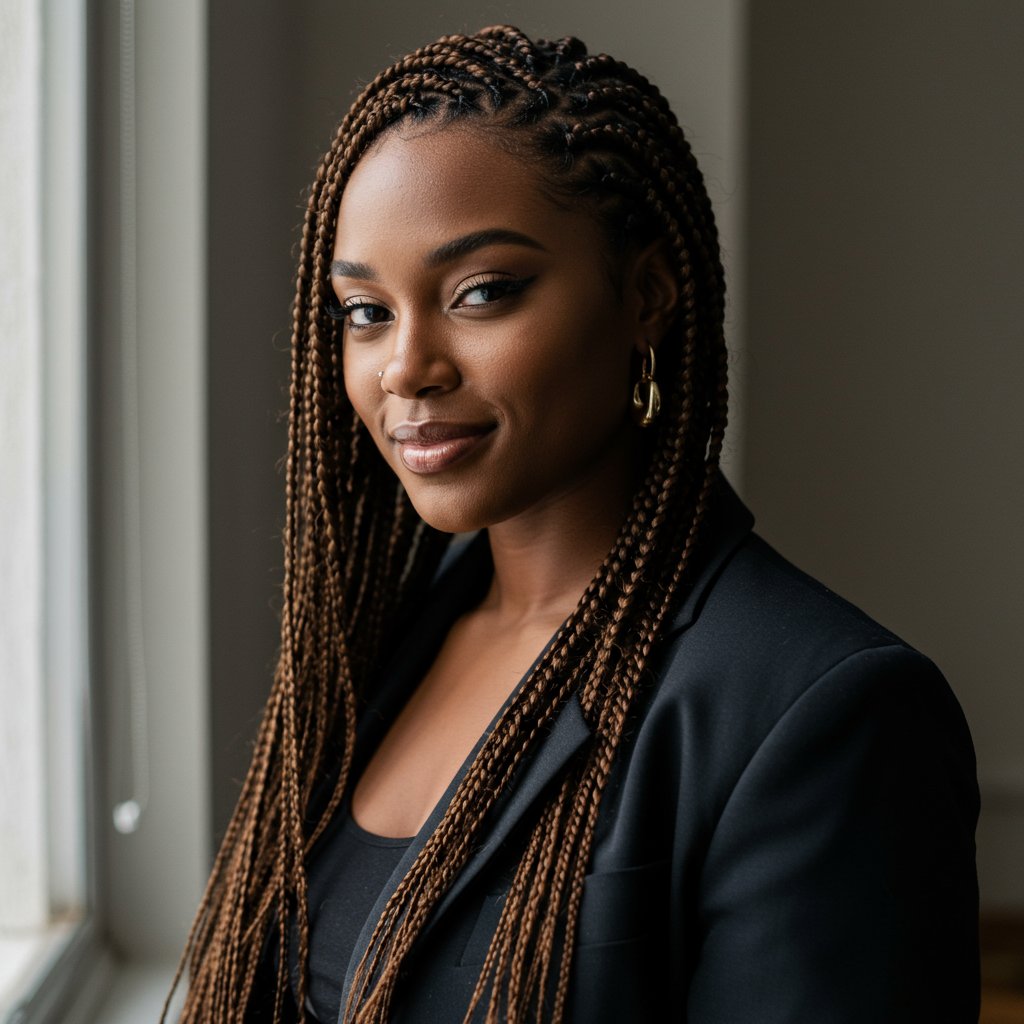
This protective style is celebrated for its versatility and ability to shield natural hair from environmental stressors and daily manipulation, promoting hair growth and health. Whether you're considering cornrows for the first time or are a seasoned enthusiast looking to deepen your knowledge, this comprehensive overview will provide you with everything you need to know. We will journey from the historical roots of the style to the practical steps of preparation, braiding, and aftercare, ensuring you are fully equipped to embrace this iconic look with confidence and respect for its heritage.
---
A Rich Tapestry: The Ancient History of Cornrows
The story of cornrows begins thousands of years ago in Africa. The earliest evidence can be traced back to rock art in the Tassili n'Ajjer mountain range in the Sahara, dating as far back as 3000 B.C., which depicts women with braided hair. The name itself, 'cornrows,' is derived from the appearance of rows of corn in a field, reflecting the agricultural roots of many African societies. These were not merely decorative; hairstyles were a complex visual language communicating a person's identity, including their tribe, age, marital status, wealth, and social position. In some cultures, specific patterns were reserved for ceremonies, warfare, or religious rites.
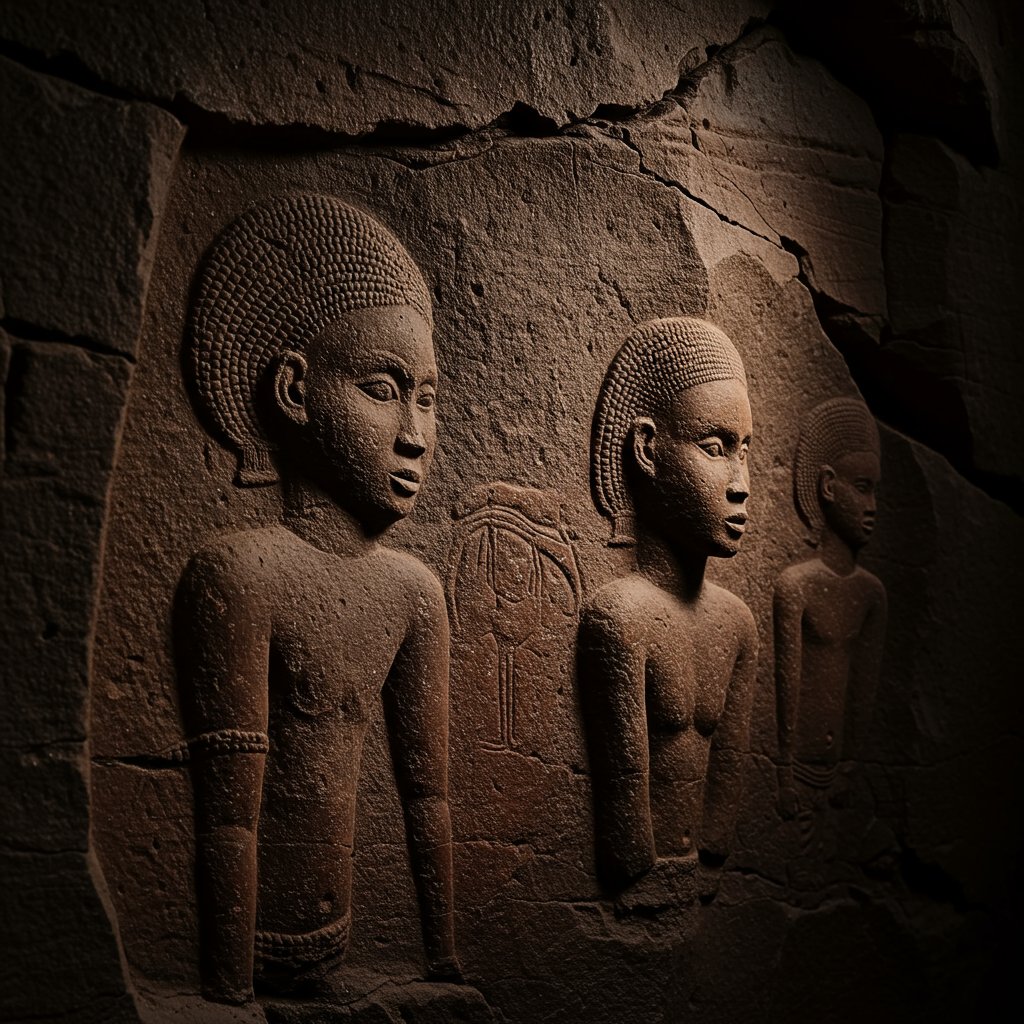
The intricacy of a design could signify one's status in the community. For example, a particular pattern might indicate a woman was ready for marriage, while another might be worn by warriors preparing for battle. The act of braiding was also a deeply social ritual, an intimate moment of bonding where elders would pass down stories, traditions, and wisdom to younger generations as they sat for hours having their hair meticulously styled. This communal aspect reinforced family and tribal ties, making the hair-braiding process a cornerstone of cultural preservation.
Tragically, this rich cultural heritage was weaponized during the transatlantic slave trade. Enslaved Africans were often shaved to strip them of their identity and culture. Yet, the tradition of cornrows endured as an act of defiance and ingenuity. In places like Colombia, enslaved people used intricate cornrow patterns as maps to guide their escape to freedom, braiding escape routes into their hair. Rice seeds were sometimes hidden in the braids to be planted for sustenance upon reaching freedom. This history imbues the style with a powerful legacy of survival, resistance, and liberation that continues to resonate today.
---
The Foundation: Hair Preparation for Perfect Cornrows
Achieving beautiful, long-lasting cornrows begins long before the first braid is plaited. Proper preparation is the foundation upon which a successful protective style is built, ensuring not only a sleek final look but also the health of your hair and scalp underneath. Neglecting this crucial stage can lead to breakage, scalp irritation, and a style that doesn't last. The primary goal of preparation is to create a clean, moisturized, and manageable canvas for the stylist to work with.
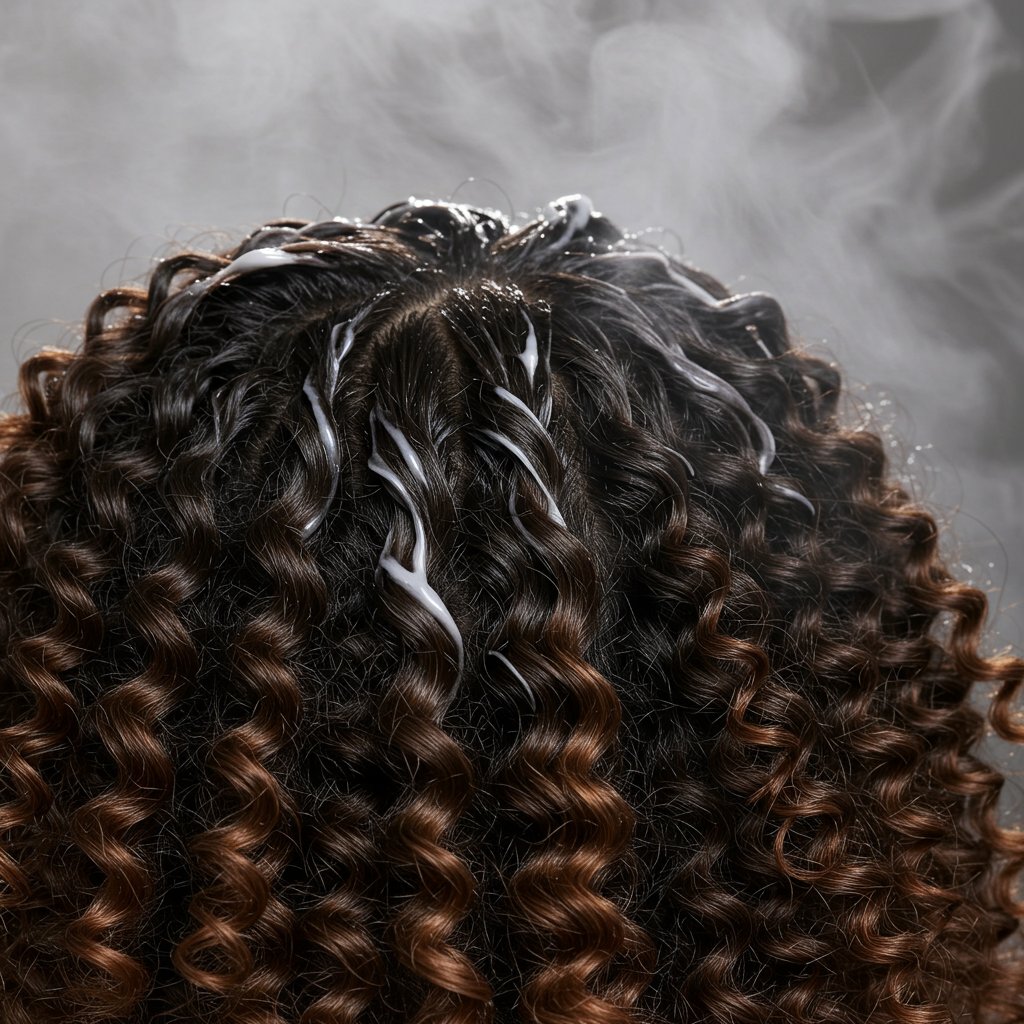
A thorough cleanse is the first step. Using a clarifying shampoo, wash your hair to remove any product buildup, dirt, or oils that could weigh down the hair or cause scalp issues. Follow this with a deeply moisturizing conditioner to replenish hydration and soften the hair strands. For an extra boost of moisture, especially for low-porosity or dry hair, a deep conditioning treatment or hair mask applied under a hooded dryer or steamer is highly recommended. This step infuses the hair with moisture, improves elasticity, and makes it less prone to snapping during the braiding process.
Once the hair is clean and conditioned, it must be completely detangled. Working in small sections, use a wide-tooth comb or your fingers to gently remove all knots and tangles, starting from the ends and working your way up to the roots. Finally, for the cleanest parts and smoothest braids, the hair should be stretched. This can be achieved by blow-drying with a comb attachment on a low to medium heat setting or by using heatless methods like banding or African threading overnight. Stretched hair allows the stylist to grip the hair cleanly, create precise parts, and ensure uniform tension, which is key to a polished and professional finish.
---
The Art of the Braid: Core Cornrowing Techniques
The creation of cornrows is a skill that requires precision, patience, and a deep understanding of hair texture and tension. While the designs can be incredibly complex, they are all built upon a few fundamental techniques. Mastering these core principles is what separates a simple braid from a true work of art. It involves not just the plaiting motion but also the parting, feeding, and tension management that define the style.
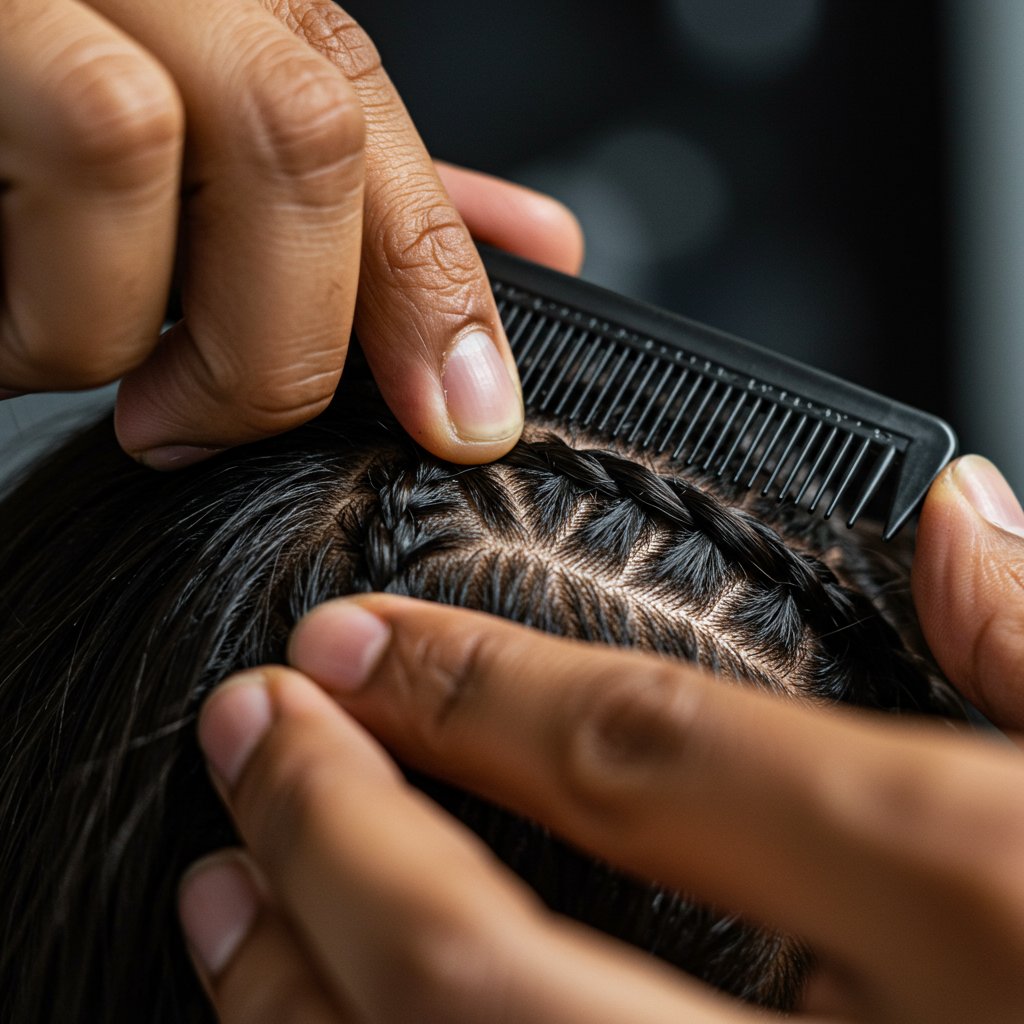
The Basic Underhand Braid (The Cornrow)
The defining technique of a cornrow is the underhand braiding method. Unlike a French or Dutch braid which is often created by crossing strands over the middle piece, a cornrow is created by crossing the outer strands under the middle piece. This underhand motion is what keeps the braid raised and defined against the scalp. The process begins with a small section of hair at the hairline, which is divided into three equal strands. As you braid, you continuously pick up small, neat sections of hair from the row you are working on and add them to the outer strands before crossing them under the middle. Consistent tension and picking up uniform amounts of hair are crucial for a neat, secure braid.The Feed-In Technique
For cornrows that incorporate extensions, the feed-in method is the gold standard for a natural-looking finish. Instead of starting the braid with a bulky knot of extension hair at the root, the stylist begins by braiding the client's natural hair for a few stitches. Then, small pieces of extension hair are gradually 'fed in' to the braid as it progresses down the row. This creates a seamless transition from the natural hair to the extension, resulting in a flatter, more realistic-looking braid that places less tension on the hairline and edges.Parting with Precision
Impeccable parting is the skeleton of any great cornrow style. Clean, sharp parts elevate the look from casual to couture. Stylists use a rat-tail comb for its precision, creating the geometric lines, curves, and swirls that form the design. The scalp is a canvas, and the parts are the lines that guide the eye. Whether creating classic straight-backs, a swirling vortex, or a complex zig-zag pattern, the neatness of the parts is non-negotiable. Applying a small amount of edge control or gel along the parts can help keep them crisp and free of flyaways.---
A Gallery of Styles: Exploring Cornrow Variations
One of the most compelling aspects of cornrows is their incredible versatility. The style can be adapted to suit any occasion, personality, or aesthetic, from understated and elegant to bold and avant-garde. The foundational techniques of braiding and parting can be combined in limitless ways, creating a vast gallery of designs that continue to evolve. Professional stylists are artists who can transform a client's vision into a stunning, wearable masterpiece.

Classic and Timeless Designs
Simple, straight-back cornrows are a timeless classic. This style is elegant, low-maintenance, and professional, making it a popular choice for all ages. However, 'simple' doesn't mean boring. Variations in the thickness of the braids, from thin micro-cornrows to bold, thick plaits, can dramatically change the look. Adding a few smaller braids in between larger ones, known as 'stitch braids,' adds a layer of texture and detail. Curved parts that follow the shape of the head can also soften the style and add a touch of grace.Intricate and Geometric Patterns
For those looking to make a statement, intricate designs offer endless possibilities. Stylists can create stunning geometric patterns, including zig-zags, triangles, and diamonds, that flow across the scalp. Swirls, vortexes, and heart-shaped designs are also popular, showcasing the stylist's skill and the client's creativity. These complex styles often become the centerpiece of a look, requiring meticulous planning and execution. They are a testament to the fact that hair braiding is a true art form.Modern Cornrow Updos and Hybrids
Cornrows serve as an excellent base for a variety of updos and hybrid styles. 'Lemonade braids,' popularized by Beyoncé, are long cornrows braided to one side, creating a chic, asymmetrical look. Cornrowed ponytails and buns are another fashionable and practical option, keeping hair neatly off the neck. Furthermore, cornrows are often combined with other styles. For example, the front half of the hair might be cornrowed, while the back is styled in box braids, twists, or left out in its natural texture. This fusion of styles allows for even greater personalization and creative expression.---
The Longevity Plan: Essential Cornrow Maintenance
Investing time and money into a beautiful cornrow style means you'll want it to last as long as possible while looking fresh and neat. Proper maintenance is key to extending the life of your braids and, more importantly, protecting the health of your hair and scalp underneath. A consistent care routine will prevent frizz, reduce scalp irritation, and ensure your natural hair remains healthy and moisturized throughout the duration of the style.
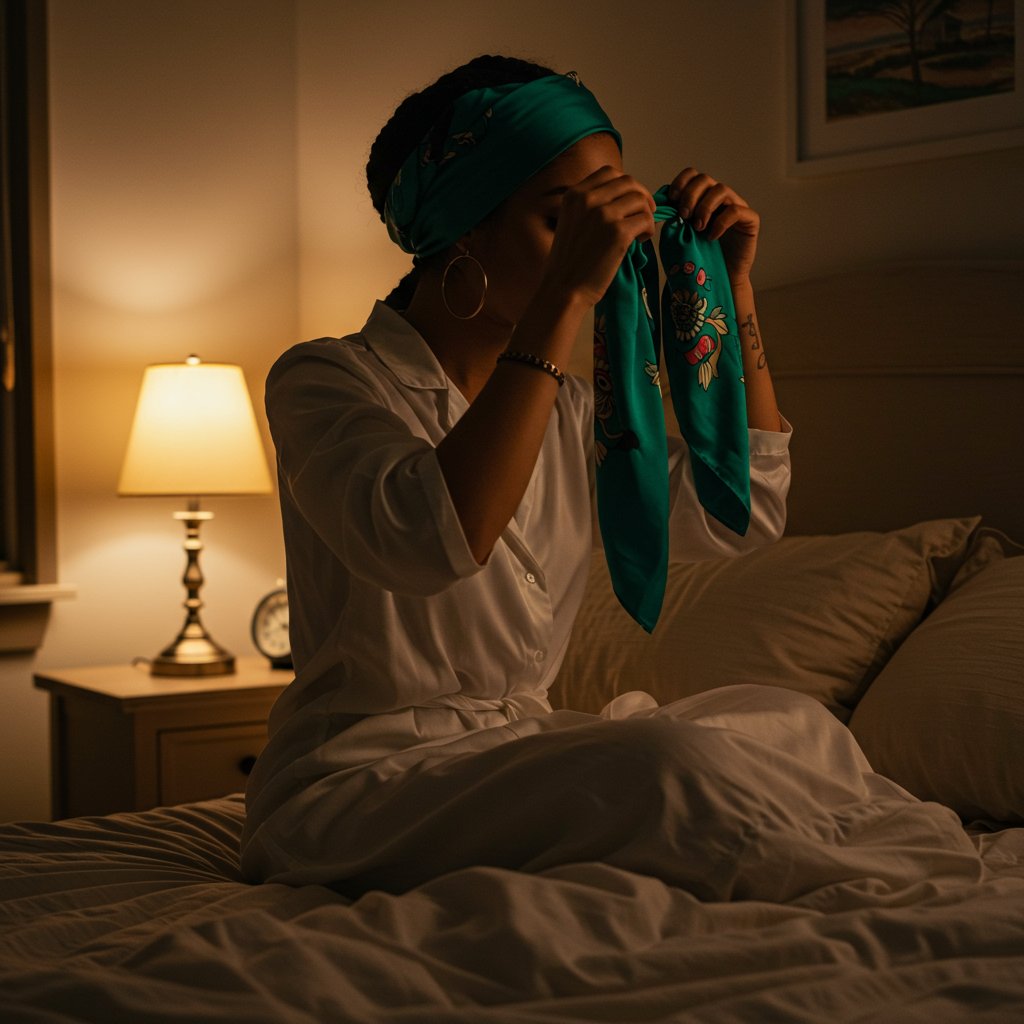
Nightly Protection Routine
Your nightly routine is the single most important factor in preserving your cornrows. Friction from cotton pillowcases can cause frizz, dryness, and even breakage over time. To prevent this, always protect your hair at night by wearing a silk or satin scarf, bonnet, or by sleeping on a silk/satin pillowcase. This smooth material allows your braids to glide without snagging, keeping them smooth and minimizing frizz around the hairline and along the length of the braids. It also helps your hair retain the moisture you've applied.Scalp Health and Moisturization
A healthy scalp is the foundation of healthy hair. While your hair is in cornrows, your scalp is more exposed and can become dry or itchy. It's crucial to keep it clean and moisturized. Avoid heavy greases or oils that can clog pores and attract dirt, leading to buildup. Instead, use a lightweight leave-in conditioner spray or a natural oil like jojoba or almond oil applied with a nozzle-tip bottle directly to the scalp. Gently massage the oil in to stimulate blood flow. If itchiness occurs, a spray containing tea tree oil or peppermint oil can provide soothing relief.Cleansing Your Cornrows
Yes, you should wash your cornrows, typically every 1-2 weeks depending on your activity level and scalp condition. To do so without creating excessive frizz, dilute a sulfate-free shampoo with water in a spray bottle. Spritz the mixture directly onto your scalp between the parts and gently massage with the pads of your fingertips (not your nails). Let the suds run down the length of the braids, gently squeezing them through. Rinse thoroughly by letting water run from the scalp down, again squeezing gently. Follow up with a light, spray-on leave-in conditioner. It's best to let your braids air-dry completely to prevent mildew, but you can use a blow dryer on a low, cool setting if needed.---
Pro-Tips for Flawless, Healthy Cornrows
To ensure the best possible experience with your cornrows, from installation to takedown, here are some expert tips to keep in mind:
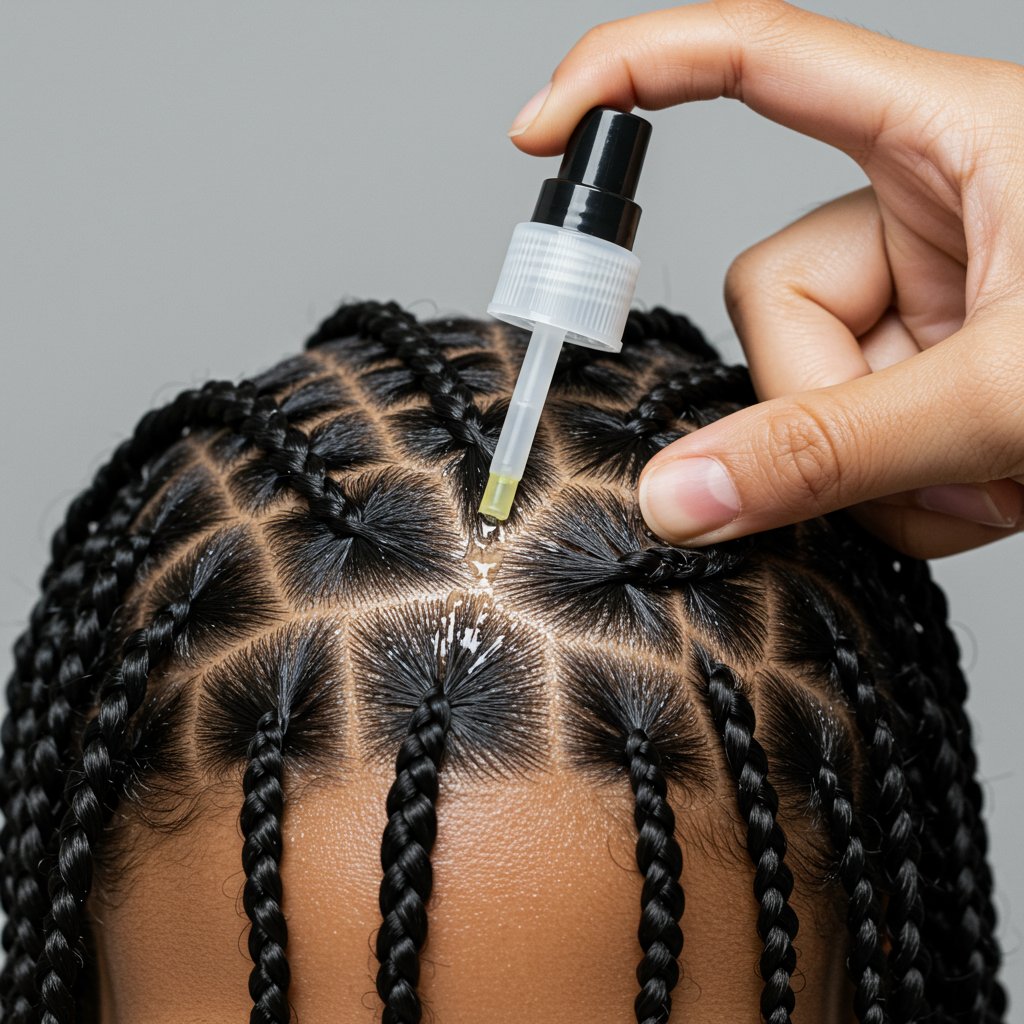
- Communicate with Your Stylist: Be clear about your desired style, but also listen to their professional advice. Importantly, speak up immediately if any braid feels too tight. Excessive tension can lead to traction alopecia, a form of hair loss.
- Don't Neglect Your Edges: Your hairline is the most delicate part of your scalp. Avoid styles that pull too tightly on your edges. When refreshing your style, use a light edge control and a soft brush, but give your edges a break from products when you can.
- Moisture is Key: Protective styles protect, but they don't eliminate the need for moisture. Regularly spritz your braids with a water-based leave-in conditioner or a simple mix of water and aloe vera juice to keep your natural hair hydrated.
- Know When to Let Go: A beautiful style can be tempting to keep for as long as possible, but wearing cornrows for too long (generally more than 4-6 weeks) can lead to matting, tangling, and buildup at the new growth. Adhere to the recommended duration for your specific style.
- Listen to Your Hair: Pay attention to your scalp and hair. If you experience persistent itching, pain, or notice excessive shedding upon takedown, your hair may need a break or a different approach to styling. Healthy hair is always the top priority.
---
Frequently Asked Questions About Cornrows
1. How long do cornrows typically last? With proper care, cornrows can last between 2 to 6 weeks. The longevity depends on the size of the braids, your hair type, how fast your hair grows, and your maintenance routine. Thinner braids tend to last longer than thicker ones.

2. Do cornrows damage your hair? When installed and maintained correctly, cornrows are a protective style that can help your hair grow. Damage occurs if they are braided too tightly, which puts excessive tension on the hair follicles, or if they are left in for too long. Proper removal is also crucial to prevent breakage.
3. Can I get cornrows with short hair? Yes, you can. A skilled stylist can cornrow hair that is as short as two inches long. For very short hair, adding extension hair can help with grip and allow for more styling versatility and longevity.
4. What is the difference between cornrows and Dutch braids? They are technically very similar, as both are three-strand plaits that sit on top of the hair. The primary difference is cultural context and terminology. The underhand braiding technique is the same, but 'cornrows' specifically refers to the style rooted in African tradition, typically involving multiple, smaller braids close to the scalp.
5. How do I stop my scalp from itching with new cornrows? Some initial tightness and mild itching can be normal as the scalp adjusts. You can relieve it by using a light oil (like peppermint or tea tree oil diluted in a carrier oil) or an anti-itch scalp spray. Avoid scratching, which can cause irritation. If the itching is severe or accompanied by bumps, the braids may be too tight.
6. How much do cornrows cost at a professional salon? The cost varies widely based on the complexity of the design, the length, whether extensions are used, the stylist's experience, and your geographic location. Simple straight-back styles can start around $50-$75, while intricate designs with added hair can cost several hundred dollars.
---
Embracing the Legacy: The Enduring Power of Cornrows
Cornrows are far more than a fleeting trend; they are a timeless art form, a symbol of cultural pride, and a practical, protective way to care for natural hair. From their ancient African origins as a language of identity to their modern-day status as a global style statement, they carry a story of resilience, creativity, and community in every plait. Understanding this rich history enhances the appreciation for the skill and artistry involved in their creation.
By prioritizing proper preparation, seeking a skilled stylist who understands healthy braiding techniques, and committing to a consistent maintenance routine, you can enjoy the beauty and benefits of cornrows without compromising the health of your hair. Whether you choose a simple, elegant design or a complex, artistic pattern, wearing cornrows is an embrace of a powerful legacy. It's a celebration of a tradition that has protected, adorned, and empowered people for millennia, and will undoubtedly continue to do so for generations to come.


